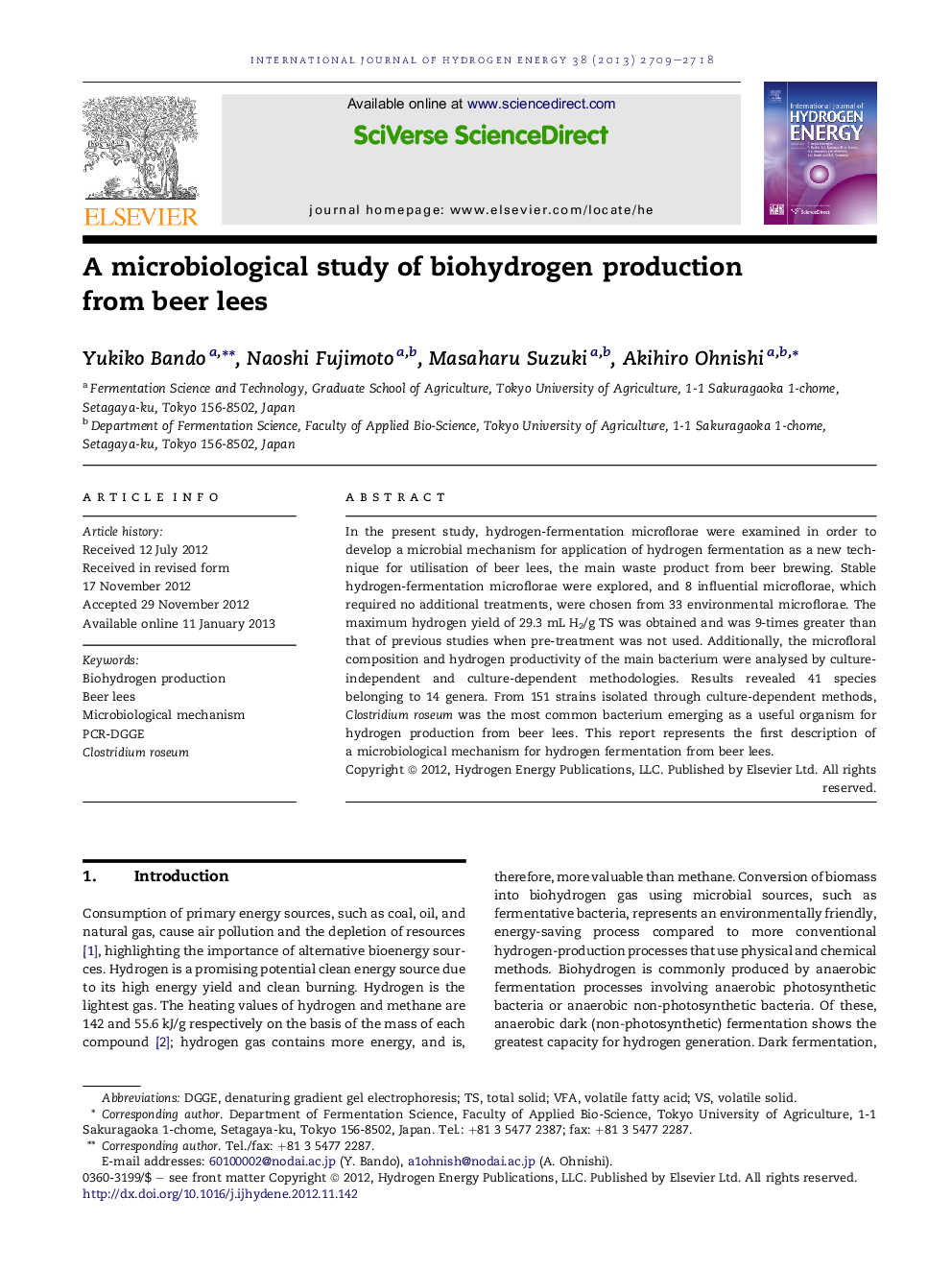| کد مقاله | کد نشریه | سال انتشار | مقاله انگلیسی | نسخه تمام متن |
|---|---|---|---|---|
| 1273801 | 1497539 | 2013 | 10 صفحه PDF | دانلود رایگان |

In the present study, hydrogen-fermentation microflorae were examined in order to develop a microbial mechanism for application of hydrogen fermentation as a new technique for utilisation of beer lees, the main waste product from beer brewing. Stable hydrogen-fermentation microflorae were explored, and 8 influential microflorae, which required no additional treatments, were chosen from 33 environmental microflorae. The maximum hydrogen yield of 29.3 mL H2/g TS was obtained and was 9-times greater than that of previous studies when pre-treatment was not used. Additionally, the microfloral composition and hydrogen productivity of the main bacterium were analysed by culture-independent and culture-dependent methodologies. Results revealed 41 species belonging to 14 genera. From 151 strains isolated through culture-dependent methods, Clostridium roseum was the most common bacterium emerging as a useful organism for hydrogen production from beer lees. This report represents the first description of a microbiological mechanism for hydrogen fermentation from beer lees.
► Hydrogen fermentation is a promising new technique for utilization of beer lees.
► A total of 8 hydrogen-fermentation microflorae were obtained.
► The maximum hydrogen yield of 29.3 mL H2/g TS was obtained in no pre-treatment.
► Clostridium roseum has an important role in hydrogen production from beer lees substrates.
► C. roseum produces hydrogen via the butyrate pathway and consumes lactate.
Journal: International Journal of Hydrogen Energy - Volume 38, Issue 6, 27 February 2013, Pages 2709–2718